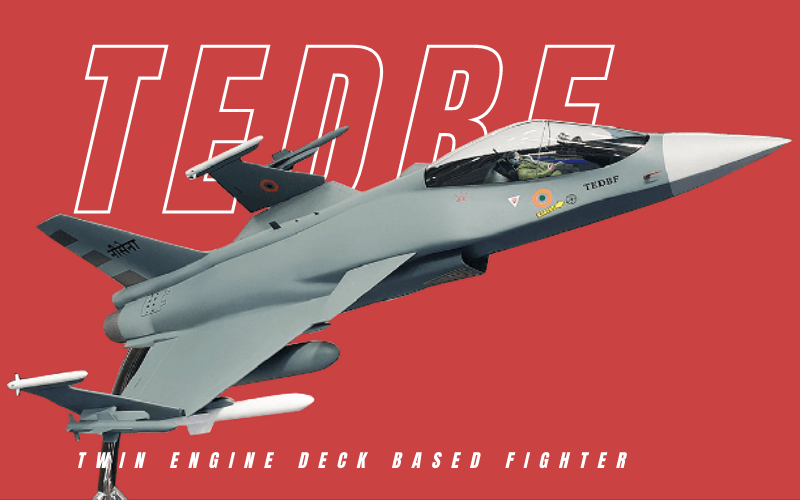Preliminary work for development of the TEDBF has begun at Aeronautical Development Agency with support from the Indian Navy. The Project is being monitored by the naval Project workplace at Bengaluru, that was at the start created to coordinate the LCA (N) project. The craft is planned to undertake its first flight by the year 2026 and roll out the assembly variant by the year 2031.
TEDBF can feature a close-coupled fable and Diverterless supersonic water (DSI) air intake with stealing optimized frontal body section and wider cockpit space for carrier-based landings. TEDBF is powered by Two GE-F414IN engines which will be later replaced by an associate native 110kN category engine to be developed for the AMCA Program. TEDBF style will any optimized to hold 5th generation fighter technology once in production.
In twelve years from now, a twin engine variant of India’s Tejas fighter might begin replacement Russian designed MiG-29K jets deployed onboard the Indian Navy’s aircraft carriers INS Vikramaditya and Vikrant that are inducted terribly soon in Indian Navy.
Consideration twenty three tonnes, the Navy Twin Engine Deck based fighter would be considerably larger than the 13.5 ton Tejas Mk-1 fighter that has entered squadron service with the Indian Air Force and therefore the 17.5 ton Tejas Mk-2 which is supposed to be inducted into the Indian Air Force from 2030. The fighter would be within the size of the MiG-29K presently being operated by the Indian Navy on its craft carrier, the INS Vikramaditya, and would have the power of carrying a weapons payload of 9 tonnes. it’d feature folding wings to save lots of houses on the deck of aircraft carriers. The jet would seemingly have a prime speed in the vary of philosopher 1.6 or simply under 2,000 kilometres per hour.
Each the Navy Twin Engine Deck based fighter and therefore the Air Force Omni Role Fighter would host many indigenous sensors and avionics that are currently at a complicated stage of development. This includes a lively Electronically Scanned radar (AESA) which may at the same time track targets within the air and out at sea or overland with nice precision. All the fighters would be built with designed in India information links and communication systems which might change the jets during a formation to firmly exchange important sensor data throughout a mission. a bunch of made-in-India weapons, as well as a long vary variants of the Astra air to air missile that has recently completed tests, would arm the jets.
Project designers indicate that none of the long run variants of the Tejas currently being studied are an area of the Navy or Air Force’s present acquisition plans. ”More than 750 aircraft can need replacement between 2030 and 2050.” By 2040, many older aircraft in commission with the Indian Air Force, including the Sukhoi 30MKI, presently the cutting edge, would wish to retire.
Development of a larger, twin engine variant of the Tejas, designers feel, is associate progressive discovery as they at the same time proceed with the look and development of a made-in-India stealth fighter referred to as the Advanced Medium Combat craft (AMCA), each larger, a lot of capable and costlier than variants of the Tejas. The AMCA is predicted to begin coming into squadron service with the IAF from 2040 if funding is secured.
”A twin engine variant of the Tejas would be within the category of the Rafale – extraordinarily nimble with wonderful sensing element fusion,” say designers performing on the plans for the futurist fighter. ”The jet would be extremely nimble with excellent sensor fusion. the actual fact that this could be entirely designed associated developed in Bharat would be a large boost for our ambitions in being a part power.”
